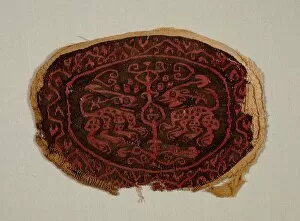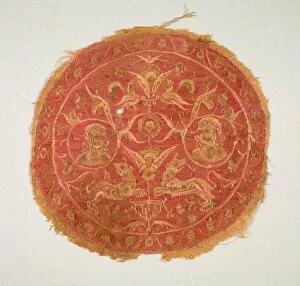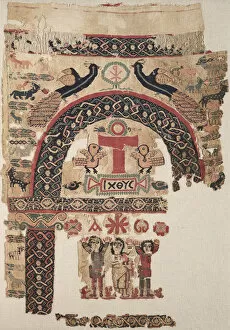Dyed Wool Collection
"Dyed Wool: A Kaleidoscope of Ancient Artistry" Step into the vibrant world of dyed wool
For sale as Licensed Images
Choose your image, Select your licence and Download the media
"Dyed Wool: A Kaleidoscope of Ancient Artistry" Step into the vibrant world of dyed wool, where ancient civilizations expressed their creativity and cultural identity through intricate textiles. These masterpieces, created by unknown artisans, offer a glimpse into the rich tapestry of history. In "Two Figures Framed by a Jeweled Border, " dating back to 450-550, we witness two enigmatic figures captured within an ornate frame adorned with precious gems. The meticulous dyeing technique brings life to this mesmerizing artwork. Moving forward in time, "Two Confronted Animals from a Tunic" (700s-800s) showcases the skillful artistry of unknown creators who transformed wool into a canvas for mythical creatures locked in eternal struggle. Their vivid colors and dynamic patterns evoke both awe and curiosity. A remarkable example from the 600s is the "Tunic or Shawl Ornament. " This delicate piece features intricate designs that intertwine like symbolic interlacing knots. The dyed wool harmoniously blends shades and hues to create an enchanting visual symphony. The late 300s - 400s bring us closer to nature with the depiction of a captivating "Nereid (Sea-Nymph) from a Hanging. " Through expert dyeing techniques, this sea nymph emerges as if she were about to dive into the depths of an azure ocean. One cannot overlook the symbolism found in pieces such as the "Ornament with Symbolic Interlacing Knots" from between 400-600 AD. Its complex patterns tell stories hidden within each knot's embrace—a testament to human ingenuity entwined with spiritual beliefs. Traveling further through time, we encounter equestrian scenes like no other in "Hunters on Horseback" (late 700s - 800 s). Dyed wool breathes life into these hunters' garments as they gallop across vast landscapes, capturing the essence of a bygone era.
















